Venture was a training ground and showcase for some big names in comics, including Brent Anderson, Frank Cirocco, Gary Winnick, and in this issue, Jeff Jones, Alex Nino, Neal Adams, Tom Orzechowski, and Steve Oliff.
Venture 5: 1976
Publisher/Editor: Horizon Zero Graphiques/Frank Cirocco

Venture ran for five issues and showcased the growing expertise of its primary players, Brent Anderson, Frank Cirocco, and Gary Winnick. More an actual comic book in form than many fanzines, in that the contributors told sequential stories as opposed to just doing spot illustrations, pin-ups, and articles. This last issue shows why they went on to become comic industry players and successful graphic artists.

I confess I have a personal soft spot for Venture. Although I came into it around issue 3, I was also connected because of a pen pal relationship with one of its founders and main players, Brent Anderson. After I wrote a few letters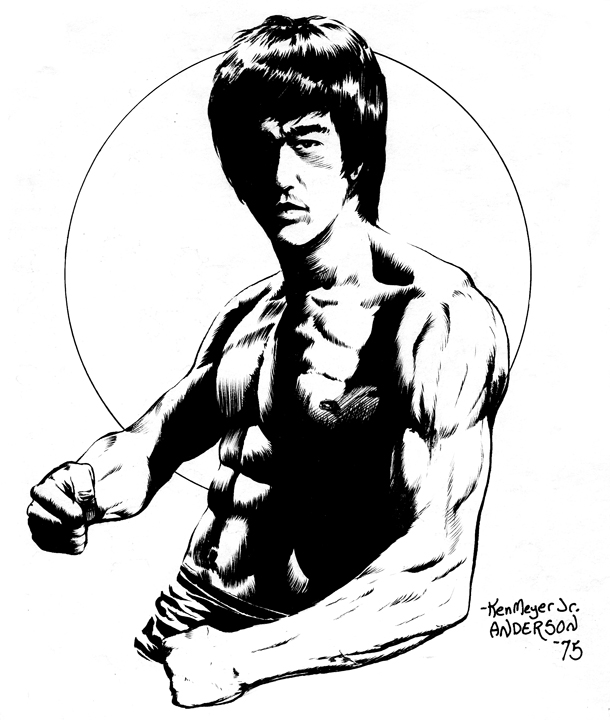 to the fanzine, Brent and I started
to the fanzine, Brent and I started 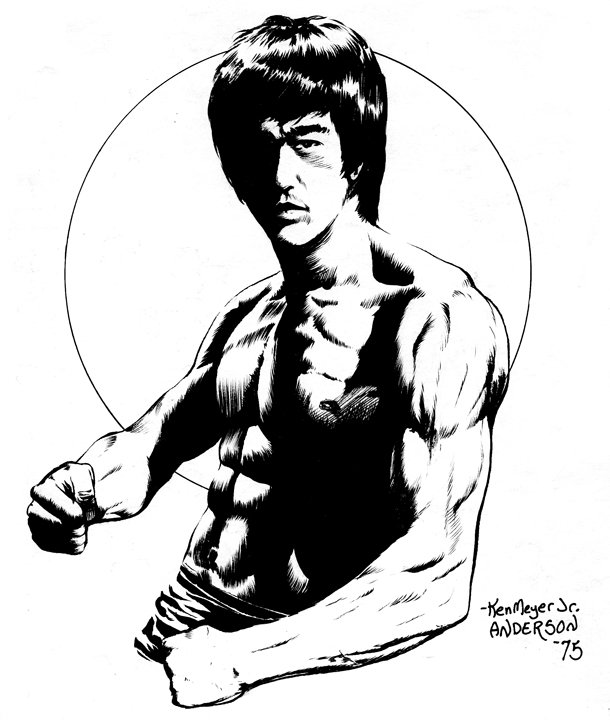 corresponding (in fact, you will see a letter from a much younger me above, while I was a senior in high school living on an air force base in Utah). I can still remember the detailed letterhead I would see every few weeks or so, from the fanzine days through his first forays into professional comics with titles such as Ka-Zar. Brent’s Neal Adams-influenced style always impressed me, and we both had an admiration for the late Bruce Lee (Brent actually inked the very first thing I ever had published, a Bruce Lee drawing seen at left, and was also instrumental in the publishing of the piece). Via email, Brent told me that he was basically self-taught (by copying photos and comic art, and learning to paint from the Walter T. Foster series of painting and drawing books). “A big plus was assisting my high school art teacher in critiquing and helping instruct the other students in exchange for an ‘A’ in the class!” He has always been very personable, forthcoming, and helpful. He would later do a pin-up for a Caliber comic called Kilroy is Here that I did for a spell as well. It is really a treat for me to see how successful he has become, especially lately with Kurt Busiek’s wonderful love song to comics, Astro City. It proves that nice guys do not always finish last.
corresponding (in fact, you will see a letter from a much younger me above, while I was a senior in high school living on an air force base in Utah). I can still remember the detailed letterhead I would see every few weeks or so, from the fanzine days through his first forays into professional comics with titles such as Ka-Zar. Brent’s Neal Adams-influenced style always impressed me, and we both had an admiration for the late Bruce Lee (Brent actually inked the very first thing I ever had published, a Bruce Lee drawing seen at left, and was also instrumental in the publishing of the piece). Via email, Brent told me that he was basically self-taught (by copying photos and comic art, and learning to paint from the Walter T. Foster series of painting and drawing books). “A big plus was assisting my high school art teacher in critiquing and helping instruct the other students in exchange for an ‘A’ in the class!” He has always been very personable, forthcoming, and helpful. He would later do a pin-up for a Caliber comic called Kilroy is Here that I did for a spell as well. It is really a treat for me to see how successful he has become, especially lately with Kurt Busiek’s wonderful love song to comics, Astro City. It proves that nice guys do not always finish last.
Venture started out like most fanzines published by eager young fans with big dreams but much smaller doses of experience and skill. Again,  via email, Brent says that “Frank and I were attending Branham High School in San Jose (I was a junior, Frank a sophomore) when we heard of a guy named Gary Winnick who had produced and published his own fanzine called Advent in nearby Santa Cruz. We contacted him and he said he was planning a second issue, so we proposed to publish our first issue of Venture at the same time using the same printer.” Issue one, in 1972, strangely enough, has the exact same page count as this last issue, number 5. It featured a story by Anderson, two by Cirocco, and one by Gary Winnick, plus the humorous Grimmley’s Tales by both Brent and Frank, which would continue throughout the fanzine’s run. “Getting out an issue of Venture was a work of love and collaboration, yet trying to carve out a private niche in each issue we could independently call our own. For me it was Grimmley’s Tales and the occasional pin-up or short story,” Brent states. If you take a gander at issue one and compare it to the work you see here on issue five, you will be amazed at the progress shown by all three men in a mere four year sp
via email, Brent says that “Frank and I were attending Branham High School in San Jose (I was a junior, Frank a sophomore) when we heard of a guy named Gary Winnick who had produced and published his own fanzine called Advent in nearby Santa Cruz. We contacted him and he said he was planning a second issue, so we proposed to publish our first issue of Venture at the same time using the same printer.” Issue one, in 1972, strangely enough, has the exact same page count as this last issue, number 5. It featured a story by Anderson, two by Cirocco, and one by Gary Winnick, plus the humorous Grimmley’s Tales by both Brent and Frank, which would continue throughout the fanzine’s run. “Getting out an issue of Venture was a work of love and collaboration, yet trying to carve out a private niche in each issue we could independently call our own. For me it was Grimmley’s Tales and the occasional pin-up or short story,” Brent states. If you take a gander at issue one and compare it to the work you see here on issue five, you will be amazed at the progress shown by all three men in a mere four year sp an. Frank and Brent especially showed enormous amounts of growth, and seemed ready for the big time. Indeed, Brent was working on his first professional work within three years of when Venture 5 came out.
an. Frank and Brent especially showed enormous amounts of growth, and seemed ready for the big time. Indeed, Brent was working on his first professional work within three years of when Venture 5 came out.
 Though Venture was primarily a playground for Anderson, Winnick, and Cirocco, there were a healthy number of spot illustrations and pin-ups from fellow fans and already established professionals. To the leftyou see an illustration by Jeff Jones, inked by Tony Salmons. Tony has developed a really loose and free style, somewhat akin to a Kyle Baker or a latter era David Mazzuchelli. You can see his site here. You will have a hell of a fun time looking through his work, as there is very little like it in comics today. Though Tony has no problem getting in your face with exaggerated figures and crazy gestures, his finishing style is much less the standard feathered cross contour line approach that is seen on almost every comic page.
Though Venture was primarily a playground for Anderson, Winnick, and Cirocco, there were a healthy number of spot illustrations and pin-ups from fellow fans and already established professionals. To the leftyou see an illustration by Jeff Jones, inked by Tony Salmons. Tony has developed a really loose and free style, somewhat akin to a Kyle Baker or a latter era David Mazzuchelli. You can see his site here. You will have a hell of a fun time looking through his work, as there is very little like it in comics today. Though Tony has no problem getting in your face with exaggerated figures and crazy gestures, his finishing style is much less the standard feathered cross contour line approach that is seen on almost every comic page.
Another guest in this issue is Carl Potts, who at that time was already working at Neal Adams’s Continuity Associates. Potts was the utility player of the group and could do it all, later going on to be a mainstay and big player in the Marvel editorial staff in the 80s, overseeing Epic magazine as well as several mainstream titles. He also did the occasional cover, and wrote as well. In 1983, Carl would team up with Cirocco and Alan Zelenetz to produce Alien Legion. Along the way, Potts also worked in the online games industry and participated in Cirocco and Winnick’s Lightsource Studios, an all-purpose art firm delivering animation as well as static illustration and design. Below you see Carl’s contribution to the fanzine. Carl Potts continues to show his wealth of expertise and skills in all media, having completed a screenplay of his Alien Legion creation, just recently sold to Jerry Bruckheimer and Disney. Yet another tale of a fanzine creator making the big time! Very big! Carl was gracious enough to answer a few questions via the trusty Facebook message system.
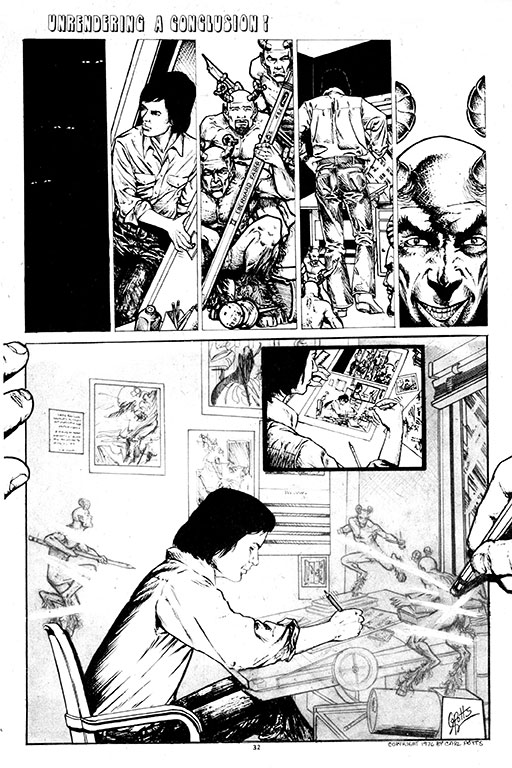
When I asked him how he ended up in Venture 5, he answered:
While attending my first San Diego Con as a fan in ’73, I met Frank Cirocco, Gary Winnick and Brent Anderson. I lived in the East bay Area (in San Leandro, directly below Oakland, CA) and they all lived in the South Bay Area around San Jose. We all hit it off and kept in contact. At some point, Frank or Gary asked me to contribute something to Venture. I don’t recall if I contributed to more than one issue. I believe the one you looked at was produced after I began working at Neal Adams and Dick Giordano’s Continuity Studios in NYC. I began working there in the summer of ’75. If I remember correctly, Neal had promised to do a cover drawing for that issue of Venture but was late in delivering it, delaying the fanzine’s publication. Frank and Gary asked me to try and apply some pressure on Neal to get it done, which put me in a slightly awkward situation. I had to remind Neal about the cover several times before he got it done. Neal surprised me by presenting me with the original of his cover rough.
The following year, Frank, Gary and Brent moved to NY to break into comics. I introduced them to Neal and Frank and Gary ended up working at Continuity for a while.
On the subject of his early involvement in comics, Carl continued:
I read comics my whole life. In the early ‘60s it was mostly DC war comics. When I was about 11, I got into Marvels, as did my cousin who was the same age. Until shortly before turning pro, my connection to real fandom was pretty much restricted to reading the letters pages in Marvel and Charlton comics. In addition to that, my cousin and my older sister also read my Marvels, I met one other guy who admitted reading comics. I traded comics with him a few times. For the most part, reading comics was considered uncool, especially when you got into high school, and was not something I advertised. Around 1974, after discovering conventions and comics shops, I believe I contributed to REH Lone Star Fictioneer and a Creation Con program book.
Carl read many of the fanzines mentioned and covered in this column, and he elaborates on that below:
I’d always seen ads for Marvel’s FOOM and Marvelmania but couldn’t afford them. I don’t believe I saw a copy of either until I turned pro and moved to NY. At the comics specialty shops I ran across Witzend (more of a “prozine”), Squa Tront, Phase 1 [one I will be covering later – Ken], Infinity, Graphic Story Magazine, Heritage, Graphic Illusions, Orb, Guts (“The Magazine With Intestinal Fortitude”), Inside Comics, The Comics Reader, and a number of others I can’t recall off the top of my head. During the ‘70s there were publishing company “prozines” like The Amazing World of DC Comics and Charlton Bullseye (that I also read).
I also asked him if he formed any relationships through fandom that lasted, and if so, did any of those relationships help his career.
In the early/mid ‘70s, comics specialty stores began popping up in Berkeley and San Jose and, in addition to the San Diego Con, smaller cons took place in the Berkeley area. It was at these cons that I met some of the pros who had moved out from NY to live in CA at that time – Jim Starlin, Alan Weiss, Frank Brunner, Steve Englehart, Tom Orzechowski. Starlin and Weiss were very helpful when I decided to move to NY to try and break into the comics biz. Starlin, knowing I had no contacts or a place to stay in NY, arranged for me to stay with his buddies Walt Simonson and Al Milgrom at their Forrest Hills apartment! Living in the same building were Berni Wrightson and Howard Chaykin. I was in fan geek heaven but feeling very out of place! In addition to Frank Cirocco, Gary Winnick and Brent Anderson, after discovering conventions, I also met a number of other soon-to-be pros that lived in the Bay Area including Steve Leialoha, Joe Chiodo and Al Gordon.
I remain friends with all but don’t have a much contact as I’d like.
Another contributor (contributing in a second hand fashion, as the illustrations were already on hand) was one of the Philippino artists that came into the industry in the 1970s, Alex Nino. Nino was always the ultimate stylist, more so than any of his contemporaries, in my opinion. Below you’ll see two pieces by the artist, one that was used on the back cover (seen below). Looking at these amazingly imaginative works of art, I can see now that I did not appreciate Nino in his heyday, being too immersed in the Marvel zombie mentality. These images make me want to search out his work again. The color work almost looks like Leyendecker on LSD!
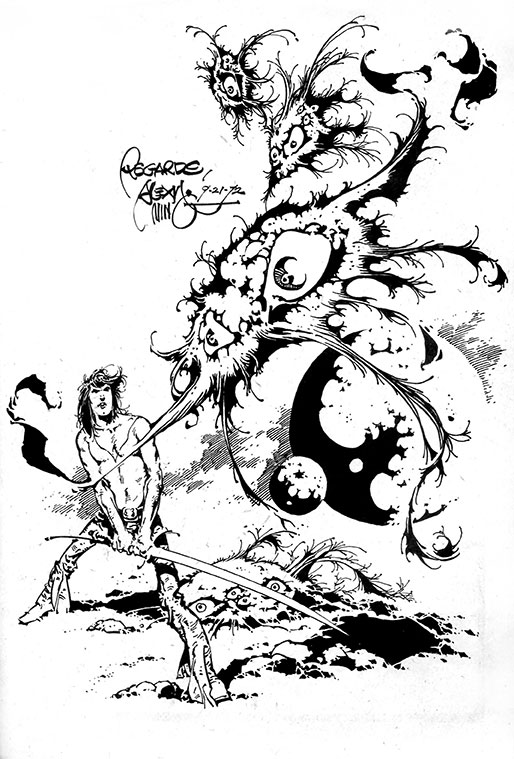

Before we jump into the actual stories featured this issue, I wanted to show a few gorgeous images by its founder, Frank Cirocco. Frank was a visual stylist, forging a romantic and florid group of characters in his various illustrations. He also had a command of the technical tools of the time, including such now outdated (and missed) items like zip-a-tone and duoshade board. Below are two full page illustrations that show his detailed and beautiful work.
Cirocco would branch out into areas other than comics eventually. One site mentions that Frank “has worked as a production artist, designer, art director, writer, editor and creative director for a variety of companies including Dreamworks, Yahoo!, LucasArts, Marvel Comics, Microsoft,
Electronic Arts, LeapFrog, Mattel, Universal Studios and Rocket Science Games.” Much of his more current work exhibits a style that inhabits the world of poster designer David Lance Goines much more than the comic art of Neal Adams. Of course, feel free to check out the previous link to Frank’s Lightsource Studios to see a wide variety of art that this creator can produce.
Now, the meat and potatoes of the issue are the stories by the three primary creators. Cirocco starts off with an eleven page SF short story called The Triad. This is a cautionary tale of greed, set in a science fiction backdrop. The story is credited to “Horizon Zero Graphiques,” so I am assuming all three friends had a hand in it. Also working on the story were Steve Leialoha on inks (along with Cirocco), and Tom Orzechowski on lettering. The backgrounds contain incredibly expertly rendered gnarled trees, and the layouts are done with an eye for variety. Look at the left half of the opening spread, using the monolithic building as the background for the figures and the panels as well. The right side continues this motif. After this you will see page 3, showing off the aforementioned rendering skill and a layout that both works within the framework of the story and as a stand alone image.



More than likely, the tone on the page above that forms the dark sky was done with a toothbrush spatter. The tone on the orb was zip-a-tone. For you youngsters, zip-a-tone was plastic sheets with various patterns and tones that you would lay over your art, cut out the tones, peel off from the backing, and then stick down on your artwork. The tone on the orb in the last panel was probably a white dot pattern,which enabled Cirocco to simulate the semi transparent nature of the globe.
 Below you see two more pages from this story. One thing I found interesting is the motif of the character running or standing outside the panel borders (seen in panel one in this page), a visual technique that Cirocco was doing in his work in the very first issue. Of course here, it is handled much better. This is a technique called “dramatic cropping,” used by a few of my favorite artists who are master layout technicians, such as Jose Luis Garcia Lopez. I really love that last page and the expert handling of the shrubbery, the shadows on the figure from the tree and the expression on the face in panel two.
Below you see two more pages from this story. One thing I found interesting is the motif of the character running or standing outside the panel borders (seen in panel one in this page), a visual technique that Cirocco was doing in his work in the very first issue. Of course here, it is handled much better. This is a technique called “dramatic cropping,” used by a few of my favorite artists who are master layout technicians, such as Jose Luis Garcia Lopez. I really love that last page and the expert handling of the shrubbery, the shadows on the figure from the tree and the expression on the face in panel two.


Brent Anderson’s influences begin with Neal Adams. “Neal Adams was by far my favorite artist at the time, but I also loved the work of Jack Kirby, John Buscema, Alex Raymond, Hal Foster, Burne Hogarth, Al Williamson, Frazetta, John Romita Sr., Will Eisner, and many many more. But Neal was the Special Guest of Comic-con that year [’76, I assume – Ken], and definitely the main draw for me.” As for the part conventions played in his learning curve, Brent says that “My first con was the 1973 Comic-con held on Harbor Island in San Diego. Frank and I flew down from San Jose, took a cab to the Sheraton Harbor Inn Hotel and split the cost of a hotel room for four nights. We had a great time, but it was an expensive trip (at least for me). I had a great time. Frank and I dogged Neal Adams around the whole time, much to his chagrin!” Later, on a mission to get professional work, Brent says he “…did use pages from Venture and my own fanzine Mindworks as samples when I went to NYC in the summer of 1976. One of the pages from the Animas Slayman story ripped off Neal’s famous rendition of GL with most of his body shape used to outline a space scape panel. When Neal saw the page he said ‘Nice effect’! I was mortified.” Brent delivers War Affair,”the second story (story by Eric Toye, letters by “The Benje,” an affectionate nickname given to Anderson by Cirocco in reference to his Ben Grimm-like upturned red nose). This is a story of three mercenaries on a mission to take down some alien warships, and allows Anderson to render some realistic figures and faces, some futuristic war vehicles, and lush foliage. On the subject of the main characters’ appearances, Anderson says, “…the black character was definitely influenced visually by the way Neal Adams handled the depiction of ethnic characters, though not specifically to the GL character you mention [I asked him about the black character in Green Lantern/Green Arrow that asked “what are you going to do for the black skins” – Ken]. The white guy was just supposed to be ‘cool.’ The asian character was based visually on a friend of mine named Nick Chinn, who worked at the San Jose Comic Art Store in downtown San Jose with me.”
Anderson’s clean inks and variety of layouts make for interesting and professional visuals. See a few pages below.


The last story in this issue is Gary Winnick’s Rogue World, which feels like the beginning of a series; in fact, it is shown in two parts, leading me to believe Winnick either thought there were going to be more issues of Venture or planned it to print earlier than this issue. The cover by Neal Adams (seen at top) spotlights the two main characters from this strip, one of them a buxom babe, and the other sort of a human/arachnid combination. Also working on the story is Brent Anderson on inks (and story assist), and Tom Orzechowski on letters. The story is one of violence and revenge and ends with a nod towards possible future stories. The artwork, though not quite up to the level of the other two stories, is easily better than most fanzine fare of the time.
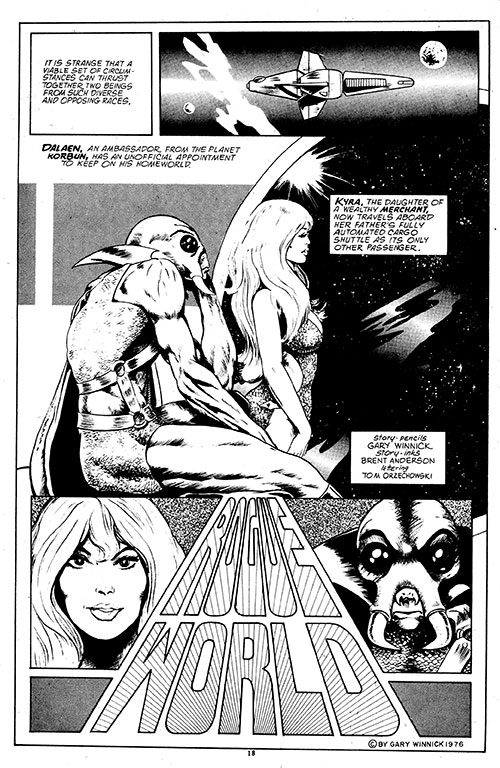

These days, Winnick works in many capacities. From his bio:
Gary Winnick has worked as an artist, designer and art director. He began his professional career as an assistant to noted comic book illustrator Neal Adams. Later Gary worked for nine years as an artist, animator and art director at Lucasfilm and Lucasarts, where he co-designed the noted graphic adventure Maniac Mansion. At Lucasfilm he was also creator and supervising producer of Defenders of Dynatron City which aired as an animated special on the Fox Kids network. Currently, Gary serves as a creative director as at his own company Lightsource Studios, a bay area contract art studio whose clients include Yahoo!, Electronic Arts and Disney.
Many enduring friendships formed as young people lovingly produced the fanzines mentioned in the various installments of Ink Stains. Brent Anderson says that “Gary, Frank and I became life-long friends and, at the time, we did indeed critique each others work, traded comics (though I mostly bought them from Frank!), and developed a fast friendship which endures to this day.”
As to the effect of the natural networking that occurred reading and producing fanzines, Brent continues with, “‘Networking’ (before the term had even been coined) through my fanzine connections was very influential in my development as a comics artist. I came to realize that young artists can have a tremendous influence on other young artists in networking through fanzine collaborations. Some of my favorite or influential fanzines were Chronicle (George S. Breo), Art & Story (James D. Denney), OM (Steve Keeter), Eclipse (Jack Moninger Jr.), FVP (“Captain Chucky” Fiala), Spectrum, Mantra (Jim Main), The Terratoid Guide (Claude D. Plum Jr.), Transmutation (Bruce Litchfield), The Ultazine (Mike Iacampo), Nightspawn (Alex Marciniszyn & Kevin Siembieda), Comique (Chuck Robinson II), Fantasy Crossroads (Jonathan Bacon), The Monster Scene (David DeLorme), One (Bill and Steve Schanes), InfinityRocket’s Blast-Comicollector (Adam Malin & Gary Berman), (Gordon B. Love & James Van Hise, Exotic Fantasy (Paul LeGrazie, Jr.), Paragon Publications (Bill Black), Comic Courier (Mike Graycar), and Omniwave (Nathan Rosen).”
Tom Orzechowski lettered two stories in this issue, so I cajoled him into talking a bit about his fanzine experience around that time and, via facebook, this is what he said:
I probably met Brent, Frank and Gary… and Tony Salmons and a couple others from their group… at the San Francisco Bay Con in the spring of ’76 [the con featuring the program book with my first published art, the Bruce Lee near the beginning of the column! -Ken]. I’d been working for Marvel for three years by then, but on new projects rather than the flagship Marvel titles. As a Marvel guy living on the West Coast, I also got some gigs for the surviving underground publishers and a couple of small local houses. My approach was a little left of mainstream, which fit right in.
Zines and creator-owned books had been in my background before the professional work. I lettered a few stories for Starlin & Milgrom and Mike Vosburg in the year before they began work at DC and Marvel, but I’d be hard pressed to tell you where they were published. There was one project that went nowhere, involving a number of ’40s costume characters that we were told we had permission to use. It was underway just as Jim started working for John Romita. Jim, Al, Terry Austin, Arvell Jones and a few other Detroit area guys were drawing this stuff, and I was lettering it, just months before we found ourselves working in New York. My primary involvement otherwise was with comics news reporting in a small monthly zine that Arvell published, not with anything that was story-driven.
The zines I was reading in the early ’70s probably didn’t have much in common with what’s out there today, as the publishers didn’t take the fan base seriously then. You’d get a smattering of news, then a lot of opinions and fawning criticism. Creator interviews, press releases, these were rare. A few that come to mind were Voice of Comicdom, which carried fan work by Richard Corben; I think it was The Marvel Tribune that had fan art by Dave Cockrum as well as Alan Weiss; Superzine was the first place I saw art by Klaus Janson. A Detroit-area back issue dealer sponsored an auction-based zine that carried art by Terry Austin. It seems like any well-printed zine from those years had art by someone who was doing major league work just a few years later. So, meeting Frank and the others struck me as more of the same thing, the same good thing. I was always of a mind to approach things in a way that didn’t look like mainstream Marvel, so we got along fine.
So, as you can see, our three heroes have come a long way since beginning the first issue of Venture. Yet another indication of how instrumental the fanzine scene of that time was in forming the comics and other forms of entertainment we enjoy today.
Thanks this installment go out to Brent Anderson primarily, but also to Carl Potts and Tom Orzechowski.
Please download the pdf for issue one, and the pdf of this issue to see the rest and read the complete stories. There are a few especially elegant pin ups by Cirocco, for example. Look for Brent, Frank, Carl, and Tom on Facebook, and see Brent’s site here, where you can buy his comic pages and see more current work.
Ken Meyer Jr.
kenmeyerjr@yahoo.com


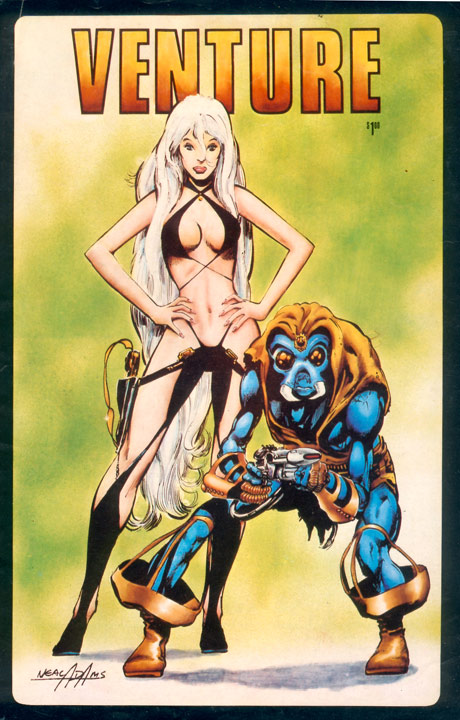


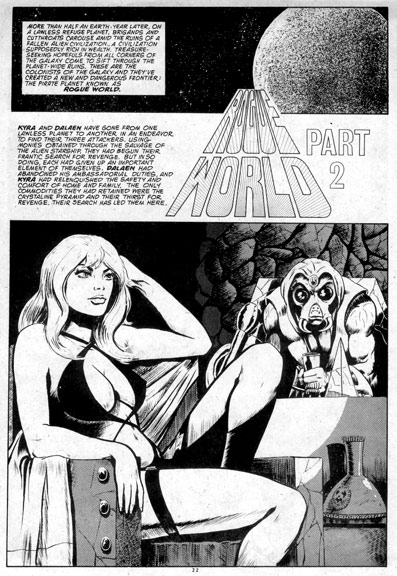
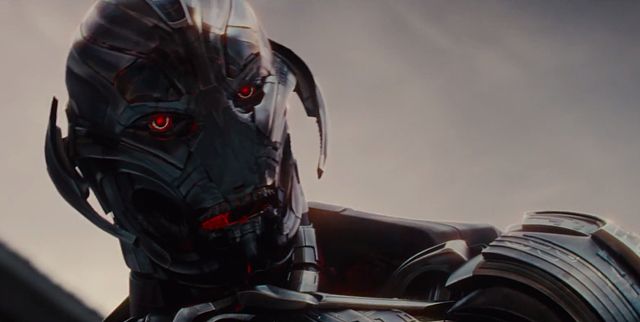
Great column! I’m a longtime fan of Brent Anderson — God Loves, Man Kills is a personal favorite of mine — and Tom Orzechowski too. I learned new things about both of them. Tony Salmons is a fantastic artist, and it’s a tragedy that he hasn’t done more comics work.
Fantastic to hear about how all of these legends were all connected some how back in the day. Great article Ken! 😀
Thanks guys…I hope this one gets a lot of views!
Love seeing all these old fanzines! Thanks for the work you put in, scanning them, and writing about them.
Can’t wait to check these out! However, FYI, neither of the links to issues #1 or #5 are working.
Gahhhh, this happens too often! I will check the links, guys, and have them fixed by tonite! Thanks to both of you…and yeah, Scott…it takes a good length of time to pull these suckers together!
That Bruce Lee is just SICK Ken! 🙂 Thanks again for putting all of this together so fans like me can enjoy it!!
Thanks, Speech…I did a really large montage like piece of Lee looooong ago, I think I have a crappy photo of it somewhere. I also actually did a piece of Carradine and Lee for the guy who wrote the script for The Silent Flute…lost any images of that long ago, too. I was a huge Lee freak way back then.
Nice work on this, Ken. I very much like the interview inserts. Anderson, Cirocco (who didn’t do nearly enough in comics) and Warwick were talented young men. I have several of the earlier Ventures and #4-5 are the best. The Grimmley material was always funny though.
I recall (and have it somewheres in a box) an oddball Canadian fanzine that featured a lot of Gene Day work. It started off as a regular fanzine and became a bizarrely packaged zine. I think the last issue was done like a cut out box with the stories on 5″ by 8″ cardstock.. You might think about displaying an issue of Hot Stuf’ too, although that title may be more of a prozine than a fanzine. .
Rich, I would definitely feature Hot Stuf if I still had one (hint), same with Venture 4 and 5 (I used to have those, but somehow lost them along the way).
And yeah, I agree about Cirocco…but I think he is best suited to book illustration, if that is even being done anymore. Damn interweb!
wonderufl stuff as always.
What i always loveof those old zines is the sheer fun that you feel in everyone of their pages. Good bad or ecelent (like this one) all zines are works love and it shows!!!!
Yeah, Roberto, you are right. I may do one very soon (a splinter from the Ultrazine crew) that was something like 40 pages of sequential fan superhero goodness…with Willie Peppers, Mark Heike, myself and several others. I think I need to do a more ‘fannish’ one like this after all the zines that are almost professional quality pieces.
Pingback: Ken Meyer Jr.’s Top 20 Art Pieces!
Brother-This sure does bring back a lot of memories! Thanks!
thanks!
Pingback: Ink Stains 70: Amazing Science Fantasy – ComicAttack.net
Pingback: Ink Stains 168: Venture 4 – ComicAttack.net